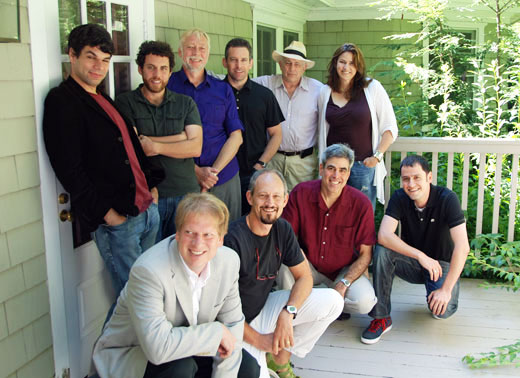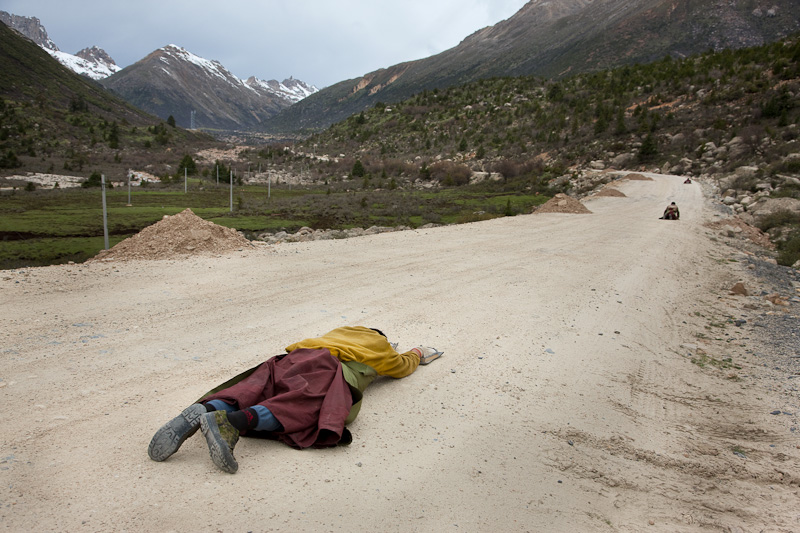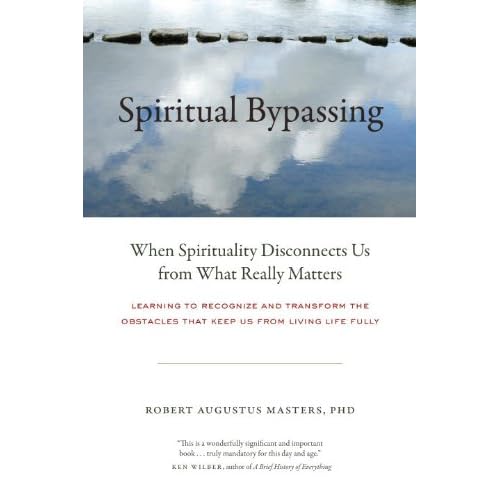
Howard Gardner, Geoffrey Miller, Brian Eno, James Fowler, Rebecca Mackinnon, Jaron Lanier, Eva Wisten, Brian Knutson, Andrian Kreye, Anonymous, Alison Gopnik, Robert Trivers, Roy Baumeister, Paul Bloom, Joshua D. Greene, Jonathan Haidt, Sam Harris, Marc D. Hauser, Josua Knobe, Elizabeth Phelps, and David Pizarro.This is a who's who of consciousness, morality, neuroscience, and development. There's a lot to see, read, and digest - I'll likely have more to say later.
An Edge Conference
Roy Baumeister, Paul Bloom, Joshua D. Greene, Jonathan Haidt,
Sam Harris, Marc D. Hauser, Josua Knobe,
Elizabeth Phelps, David Pizarro
INTODUCTIONBy John Brockman
Something radically new is in the air: new ways of understanding physical systems, new ways of thinking about thinking that call into question many of our basic assumptions. A realistic biology of the mind, advances in evolutionary biology, physics, information technology, genetics, neurobiology, psychology, engineering, the chemistry of materials: all are questions of critical importance with respect to what it means to be human. For the first time, we have the tools and the will to undertake the scientific study of human nature.
This began in the early seventies, when, as a graduate student at Harvard, evolutionary biologist Robert Trivers wrote five papers that set forth an agenda for a new field: the scientific study of human nature. In the past thirty-five years this work has spawned thousands of scientific experiments, new and important evidence, and exciting new ideas about who and what we are presented in books by scientists such as Richard Dawkins, Daniel C. Dennett, Steven Pinker, and Edward O. Wilson among many others.
In 1975, Wilson, a colleague of Trivers at Harvard, predicted that ethics would someday be taken out of the hands of philosophers and incorporated into the "new synthesis" of evolutionary and biological thinking. He was right.
Scientists engaged in the scientific study of human nature are gaining sway over the scientists and others in disciplines that rely on studying social actions and human cultures independent from their biological foundation.
No where is this more apparent than in the field of moral psychology. Using babies, psychopaths, chimpanzees, fMRI scanners, web surveys, agent-based modeling, and ultimatum games, moral psychology has become a major convergence zone for research in the behavioral sciences.
So what do we have to say? Are we moving toward consensus on some points? What are the most pressing questions for the next five years? And what do we have to offer a world in which so many global and national crises are caused or exacerbated by moral failures and moral conflicts? It seems like everyone is studying morality these days, reaching findings that complement each other more often than they clash.
— JB
Culture is humankind’s biological strategy, according to Roy F. Baumeister, and so human nature was shaped by an evolutionary process that selected in favor of traits conducive to this new, advanced kind of social life (culture). To him, therefore, studies of brain processes will augment rather than replace other approaches to studying human behavior, and he fears that the widespread neglect of the interpersonal dimension will compromise our understanding of human nature. Morality is ultimately a system of rules that enables groups of people to live together in reasonable harmony. Among other things, culture seeks to replace aggression with morals and laws as the primary means to solve the conflicts that inevitably arise in social life. Baumeister’s work has explored such morally relevant topics as evil, self-control, choice, and free will. [More]
According to Yale psychologist Paul Bloom, humans are born with a hard-wired morality. A deep sense of good and evil is bred in the bone. His research shows that babies and toddlers can judge the goodness and badness of others' actions; they want to reward the good and punish the bad; they act to help those in distress; they feel guilt, shame, pride, and righteous anger. [More]
Harvard cognitive neuroscientist and philosopher Joshua D. Greene sees our biggest social problems — war, terrorism, the destruction of the environment, etc. — arising from our unwitting tendency to apply paleolithic moral thinking (also known as "common sense") to the complex problems of modern life. Our brains trick us into thinking that we have Moral Truth on our side when in fact we don't, and blind us to important truths that our brains were not designed to appreciate. [More]
University of Virginia psychologist Jonathan Haidt's research indicates that morality is a social construction which has evolved out of raw materials provided by five (or more) innate "psychological" foundations: Harm, Fairness, Ingroup, Authority, and Purity. Highly educated liberals generally rely upon and endorse only the first two foundations, whereas people who are more conservative, more religious, or of lower social class usually rely upon and endorse all five foundations. [More]
The failure of science to address questions of meaning, morality, and values, notes neuroscientist Sam Harris, has become the primary justification for religious faith. In doubting our ability to address questions of meaning and morality through rational argument and scientific inquiry, we offer a mandate to religious dogmatism, superstition, and sectarian conflict. The greater the doubt, the greater the impetus to nurture divisive delusions. [More]
Evil, says Harvard psychologist and evolutionary biologist Marc D. Hauser, evolved, and emerges in daily life, as an accident of our brain's engineering. Unlike any other creature, present or past, only we combine processes of the mind that have independent and highly adaptive consequences for survival to create the ingredients of evil. When our desire for personal gain combines with our capacity for denial, we turn to excessive harms, aimed at eliminating, effacing, humiliating, and obliterating those who stand in the way. [More]
A lot of Yale experimental philosopher Joshua Knobe's recent research has been concerned with the impact of people's moral judgments on their intuitions about questions that might initially appear to be entirely independent of morality (questions about intention, causation, etc.). It has often been suggested that people's basic approach to thinking about such questions is best understood as being something like a scientific theory. He has offered a somewhat different view, according to which people's ordinary way of understanding the world is actually infused through and through with moral considerations. He is arguably most widely known for what has come to be called "the Knobe effect" or the "Side-Effect Effect." [More]
NYU psychologist Elizabeth Phelps investigates the brain activity underlying memory and emotion. Much of Phelps' research has focused on the phenomenon of "learned fear," a tendency of animals to fear situations associated with frightening events. Her primary focus has been to understand how human learning and memory are changed by emotion and to investigate the neural systems mediating their interactions. A recent study published in Nature by Phelps and her colleagues, shows how fearful memories can be wiped out for at least a year using a drug-free technique that exploits the way that human brains store and recall memories. [More]
Disgust has been keeping Cornell psychologist David Pizarro particularly busy, as it has been implicated by many as an emotion that plays a large role in many moral judgments. His lab results have shown that an increased tendency to experience disgust (as measured using the Disgust Sensitivity Scale, developed by Jon Haidt and colleagues), is related to political orientation. [More]
Among the members of the press in attendance were: Sharon Begley, Newsweek, Drake Bennett, Ideas, Boston Globe, David Brooks, OpEd Columnist, New York Times, Daniel Engber, Slate, Amanda Gefter, Opinion Editor, New Scientist, Jordan Mejias, Frankfurter Allgemeine Zeitung, Gary Stix, Scientific American, Pamela Weintraub, Discover Magazine.
PROCEEDINGS
Each of the nine participants led a 45-minute session on Day One that consisted of a 25-minute talk, followed by 20-minutes of discussion.
Day Two consisted of two 90-minute open discussions on "The New Science of Morality". The first session, "Consensus/Outstanding Disagreements", led by Jonathan Haidt, explored the the scientific aspects of where we are, how much consensus we have, and what empirical or theoretical questions are still outstanding in the science of morality. The second session, "Applications/Implications", led by Marc D. Hauser, gave the participants an opportunity to think big about how the science of morality can be applied to make the world a better place, make governments work better, improve corporate governance, law, the Internet, etc. The goal for Day Two: to begin work on a consensus document on the state of moral psychology to be published on Edge in the near future.
We are pleased to make the entire 10-hours of talks and discussions available to the Edge community. Over the next month we will serialize the conference by rolling out one or two of 45-minute sessions as an Edge Edition. This will include HD video of the 25-minute talk (with complete text), the 20-minute discussion, and a doublowdable audio MP3 of the talk. We will end the series with the last two ninety-minute discussions on "The New Science of Morality". ...









